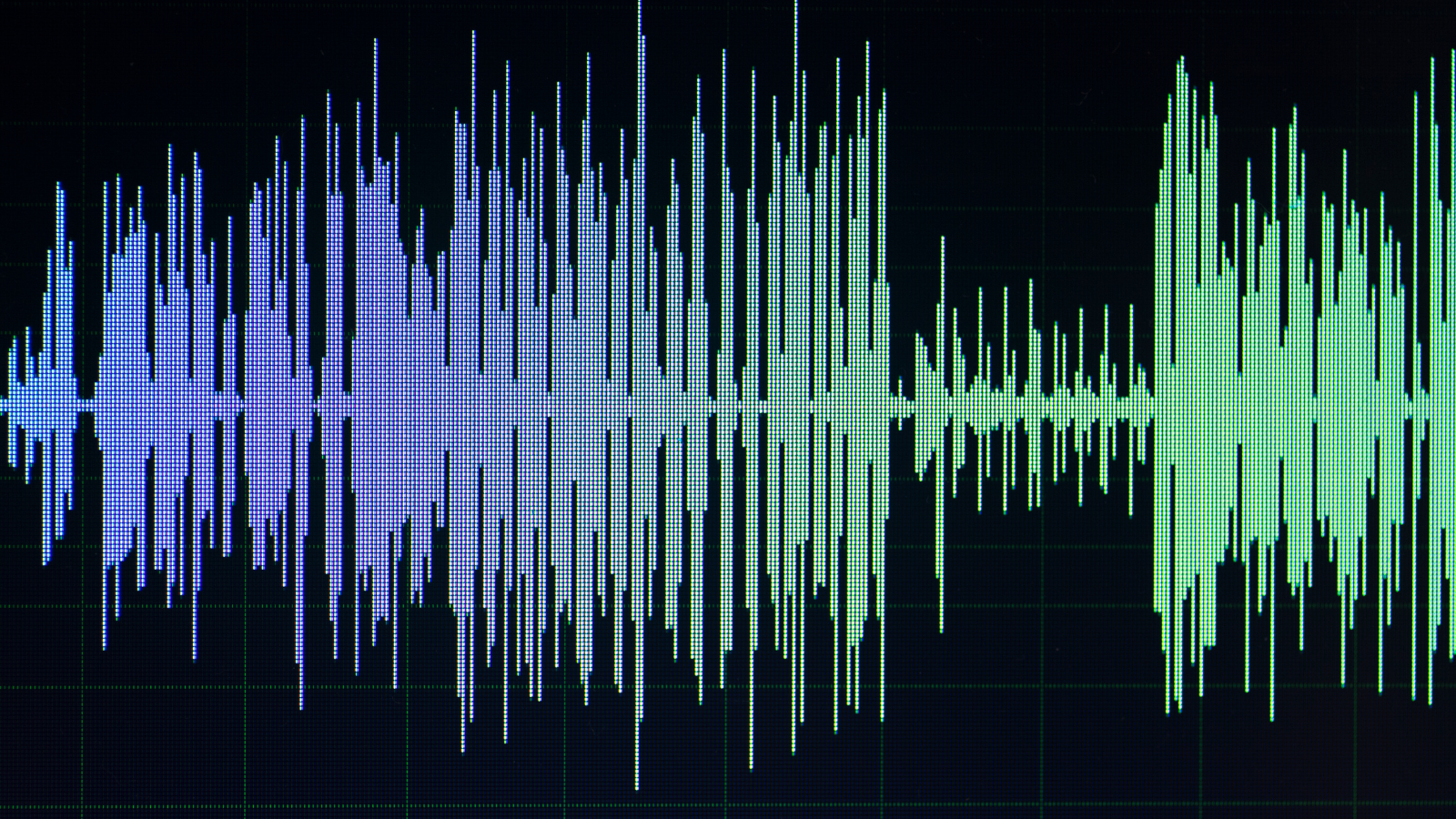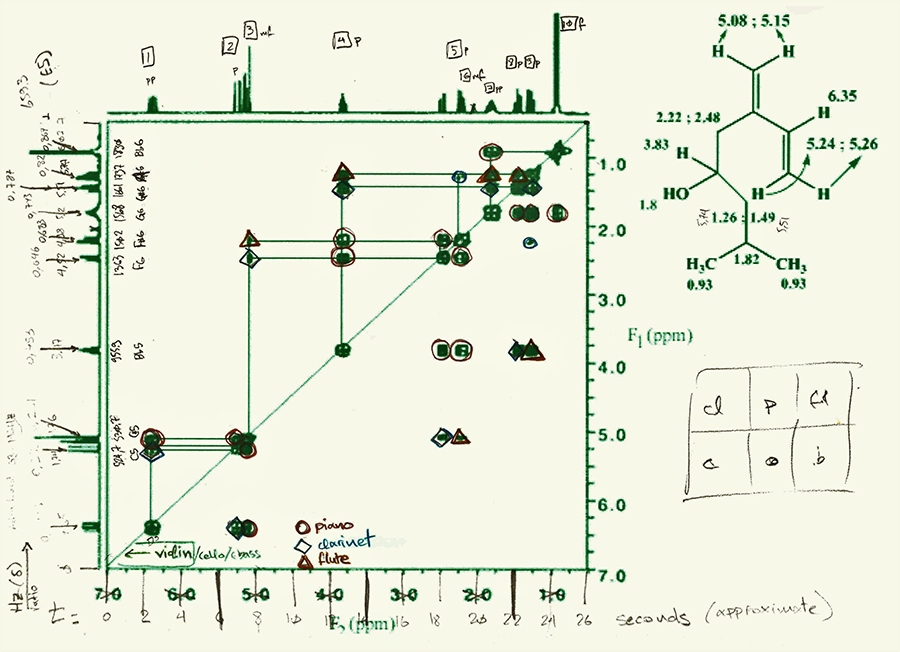


The audio representation of Nuclear Magnetic Resonance (NMR) spectroscopy data bridges the contrasts of art and science while showcasing the overlaps between scientific concepts and musical theory. Spectral audification can be seen both as a powerful tool that eases NMR analysis and as a medium for exploring the aesthetic possibilities of sound composition.
What is NMR spectroscopy? It is a non-destructive analytical technique that makes use of magnetic fields to obtain structural information about molecules. NMR is widely applied in cutting-edge science and technology fields and is especially common in the disciplines of chemistry and life sciences.
How does it work? In simple terms, NMR relies on the interaction of the atomic nuclei of molecular systems with a static, externally applied, magnetic field. All nuclei are electrically charged and have multiple spins, thus the external magnetic field creates the possibility of an energy transfer [1].
As the nuclei spin returns to its base position, the emission of energy occurs at the same frequency.
The magnetic field makes the possible spin-states of the nucleus differ in energy, and NMR techniques are used to promote observable transitions between nuclear energy levels. These energy variants are called resonance frequencies and are detected and recorded by the NMR machine.
Sonification uses non-speech audio as another way of conveying information or perceptualizing data. Although its use in a scientific context is extremely sparse, auditory conception offers potential benefits such as nuanced spatial information through binaural audio cues, and ease of interactivity and has advantages in temporal, amplitude, and frequency resolution. In a way, it can enable the cocktail-party effect, helping the analysis of complex and noisy spectra. Molecular sonification has been used to analyze large DNA datasets or to find visually imperceptible changes in coupled atomic oscillations [2].
There are various sonification techniques that can be used to display Nuclear Magnetic Resonance (NMR) spectra. Different sound elements (pitch, volume, tempo) can be the vehicles to express the changes in the information you are communicating. “Spectral Audification” allows a quick overview of the data whereas a simple parameter mapping method allows more in-depth analysis of the spectra such as the use of rhythmic patterns to make sets of peaks easily identifiable [3].
Molecular sonification has been extensively used in contemporary electroacoustic music composition and the field of sound art. It can be a powerful tool to contextualize extra-musical ideas through experimental and exploratory practice [4].
On the below spectrogram, you may see the 2D H-H Correlated Spectrum of ipsenol arranged for four instruments by Thanos Andreou (Phd, Scientific Affairs at VIO Chemicals).

Thanos assigned the signals on the spectrum’s diagonal to a violin glissando and the off-diagonal correlations to “events”. Then, he distributed the components of each event to the other available instruments. The result was a miniature (~30 sec) which was performed, along with another 110 miniatures, by dissonArt in Thessaloniki, Greece.
“If we imagine time as the x-axis of the 1HCOSY, these pairs of correlated frequencies are actually “music.” They form a sequence of co-sounding events, just at a non-audible range of frequencies. I found it fascinating that this is all inherently built into each molecule and wanted to bring it to an audible range.” Thanos adds “that the whole procedure felt like he was more of an interpreter rather than a composer” [5].
The idea that the artists see themselves more as an element in a creative process, allocating responsibility to data is a trend noted in digital arts, while the predominant role of the process in the composition has a conceptual continuum with the techniques developed by composers of the mid-twentieth century such as Stockhausen, Xenakis, and the serialist composers [6].
NMR sonification is neither solely music nor serves as a mere illustration. It stands somewhere in between science and art, in an almost unexplored field, raising intriguing questions on the connection between art and science, creativity, aesthetics, and the realization of meaningful mappings between biological processes and musical parameters.
References:
△